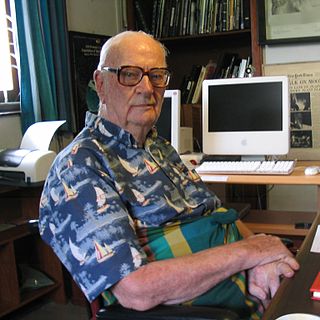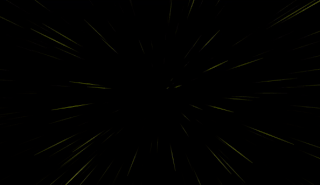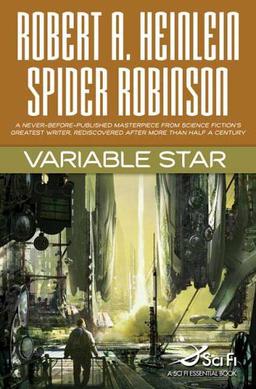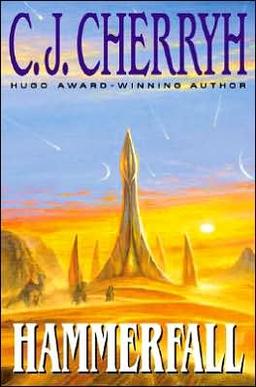Related Research Articles

Hard science fiction is a category of science fiction characterized by concern for scientific accuracy and logic. The term was first used in print in 1957 by P. Schuyler Miller in a review of John W. Campbell's Islands of Space in the November issue of Astounding Science Fiction. The complementary term soft science fiction, formed by analogy to the popular distinction between the "hard" (natural) and "soft" (social) sciences, first appeared in the late 1970s. Though there are examples generally considered as "hard" science fiction such as Isaac Asimov's Foundation series, built on mathematical sociology, science fiction critic Gary Westfahl argues that while neither term is part of a rigorous taxonomy, they are approximate ways of characterizing stories that reviewers and commentators have found useful.

Glen David Brin is an American science fiction author. He has won the Hugo, Locus, Campbell and Nebula Awards. His novel The Postman was adapted into a 1997 feature film starring Kevin Costner.

Alien invasion or space invasion is a common feature in science fiction stories and films, in which extraterrestrial lifeforms invade Earth to exterminate and supplant human life, enslave it, harvest people for food, steal the planet's resources, or destroy the planet altogether. It can be considered as a science-fiction subgenre of the invasion literature, expanded by H. G. Wells's seminal alien invasion novel The War of the Worlds, and is a type of 'first contact' science fiction.

Charles Sheffield, was an English-born mathematician, physicist and science-fiction writer who served as a President of the Science Fiction and Fantasy Writers of America and of the American Astronautical Society.

La Planète des singes, known in English as Planet of the Apes in the US and Monkey Planet in the UK, is a 1963 science fiction novel by French author Pierre Boulle. It was adapted into the 1968 film Planet of the Apes, launching the Planet of the Apes media franchise.
Godspeed is a parting statement, wishing someone a prosperous journey or success.

Patrice Ann "Pat" Murphy is an American science writer and author of science fiction and fantasy novels.

Nicholas Julian Zapata Sagan is an American novelist and screenwriter. He is the author of the science fiction novels Idlewild, Edenborn, and Everfree, and has also written scripts for episodes of Star Trek: The Next Generation and Star Trek: Voyager. He is the son of astronomer Carl Sagan and artist and writer Linda Salzman.

Mao II, published in 1991, is Don DeLillo's tenth novel. The book tells the story of a novelist, struggling to finish a novel, who travels to Lebanon to assist a writer being held hostage. The title is derived from a series of Andy Warhol silkscreen prints depicting Mao Zedong. DeLillo dedicated the book to his friend Gordon Lish. Major themes of the book include crowds and the effects of political terrorism. Mao II received positive reviews from critics and won the PEN/Faulkner Award in 1992.

In science fiction, hyperspace is a concept relating to higher dimensions as well as parallel universes and a faster-than-light (FTL) method of interstellar travel. In its original meaning, the term "hyperspace" was simply a synonym for higher-dimensional space. This usage was most common in 19th-century textbooks and is still occasionally found in academic and popular science texts, for example, Hyperspace (1994). Its science fiction usage originated in the magazine Amazing Stories Quarterly in 1931 and within several decades it became one of the most popular tropes of science fiction, popularized by its use in the works of authors such as Isaac Asimov and E. C. Tubb, and media franchises such as Star Wars.

Cowl is a 2004 science fiction novel by British writer Neal Asher. The novel deals with time travel and an epic time war between two factions from the 43rd century. Asher first started working on the novel as a novella named Cowl At The Beginning, which he eventually developed into the full novel Cowl.

Variable Star is a 2006 science fiction novel by American author Spider Robinson, based on the surviving seven pages of an eight-page 1955 novel outline by the late Robert A. Heinlein. The book is set in a divergent offshoot of Heinlein's Future History and contains many references to works by Heinlein and other authors. It describes the coming of age of a young musician who signs on to the crew of a starship as a way of escaping from a failed romance. Robinson posted a note on his website in 2009 noting that his agent had sold a trilogy of sequels based on the novel and its characters.

Hammerfall is a science fiction novel by American science fiction and fantasy author C. J. Cherryh. It was first published in June 2001 in the United States by HarperCollins under its Eos Books imprint. It was also serialized in two parts as Ribelle Genetico and Il Pianeta del Deserto in the Italian science fiction magazine, Urania, published in issue 1425 in October 2001, and issue 1430 in January 2002, respectively.

The Life Eaters is a 2003 science fiction graphic novel written by David Brin and with art by Scott Hampton. It was published by WildStorm. The work is 144 pages long.

Black holes, objects whose gravity is so strong that nothing—including light—can escape them, have been depicted in fiction since at least the pulp era of science fiction, before the term black hole was coined. A common portrayal at the time was of black holes as hazards to spacefarers, a motif that has also recurred in later works. The concept of black holes became popular in science and fiction alike in the 1960s. Authors quickly seized upon the relativistic effect of gravitational time dilation, whereby time passes more slowly closer to a black hole due to its immense gravitational field. Black holes also became a popular means of space travel in science fiction, especially when the notion of wormholes emerged as a relatively plausible way to achieve faster-than-light travel. In this concept, a black hole is connected to its theoretical opposite, a so-called white hole, and as such acts as a gateway to another point in space which might be very distant from the point of entry. More exotically, the point of emergence is occasionally portrayed as another point in time—thus enabling time travel—or even an entirely different universe.

A Mango-Shaped Space is a 2003 young adult novel by the American author Wendy Mass. A Mango-Shaped Space is Mass's fourth fiction novel. The book received the American Library Association Schneider Family Book Award in 2004. The novel has since been nominated for, and received, a number of other awards. The hand lettering on the cover is by Billy Kelly. The book is recommended for grades 5–8. A 7-hour long audiobook version, narrated by Danielle Ferland, has been produced.

Comets have appeared in works of fiction since at least the 1830s. They primarily appear in science fiction as literal objects, but also make occasional symbolical appearances in other genres. In keeping with their traditional cultural associations as omens, they often threaten destruction to Earth. This commonly comes in the form of looming impact events, and occasionally through more novel means such as affecting Earth's atmosphere in different ways. In other stories, humans seek out and visit comets for purposes of research or resource extraction. Comets are inhabited by various forms of life ranging from microbes to vampires in different depictions, and are themselves living beings in some stories.

Karen Lord is a Barbadian writer of speculative fiction. Her first novel, Redemption in Indigo (2010), retells the story "Ansige Karamba the Glutton" from Senegalese folklore and her second novel, The Best of All Possible Worlds (2013), is an example of social science fiction. Lord also writes on the sociology of religion.

The Nickel Boys is a 2019 novel by American novelist Colson Whitehead. It is based on the historic Dozier School, a reform school in Florida that operated for 111 years and was revealed as highly abusive. A university investigation found numerous unmarked graves for unrecorded deaths and a history into the late 20th century of emotional and physical abuse of students.

Space travel, or space flight is a science fiction theme that has captivated the public and is almost archetypal for science fiction. Space travel, interplanetary or interstellar, is usually performed in space ships, and spacecraft propulsion in various works ranges from the scientifically plausible to the totally fictitious.
References
- ↑ Fowler, Karen Joey (30 January 1994). "Galactic Swashbuckler". The Washington Post . Retrieved 25 September 2024.
- ↑ Brin, David (November 1993). "Godspeed, by Charles Sheffield". Science Fiction Age . Retrieved 25 September 2024.
- ↑ "GODSPEED". Kirkus Reviews . 1 September 1993. Retrieved 25 September 2024.